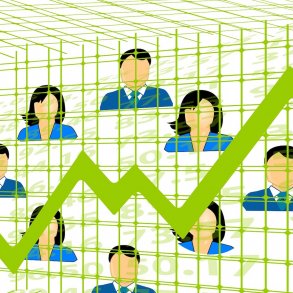Mathias Holmgrem interviews Bonnitta Roy, originally published as a single article on crisp.se
Part 1 of this article is here.
Can you give us a short introduction of your experience and what you enjoy working with?
I have always been fascinated with the natural world. As I child I would spend summer evenings watching ants come and go, carrying their eggs, building their nests, foraging for food and occasionally squabbling over territory. This led to an attraction toward natural systems design in gardening and farming, but also as it applies to companies, education and community associations.
I studied neuroscience and philosophy in graduate school, but, when not in the lab, I spent most of my time learning about the local ecosystems around the Bay Area in California — from the ground up. I became a self-taught horticulturalist, and ecologist, and I moved back east to New York City (of all places) where I ran an interior-exterior plantscape design company.
Growing a company from scratch in New York City is not easy. The owner and I made up everything as we went along, designing and acting from simple principles and avoiding the traps that would escalate complexity. Here I was intuitively borrowing from regenerative design principles in ecology.
Eventually I yearned to work more with large landscapes and “wild land” so I moved to Northwest Connecticut where my partner and I began building out our home/horse farm. I helped the owners of a local garden center and nursery expand to an $11 million Design-Build and construction firm. I was fortunate to work with people from all walks of life, and to work on fabulous properties and award-winning projects.
What are some of the strengths that you have seen in agile organizations today in terms of practicing OPO ideas?
Many agile organizations have intuitively come to the notion of location through various trials and errors, where locations have been called “strategic bets” or “initiatives.” This seems to release some of the complexity around scaling where people combine and recombine in different ways (teams, squads, teams-of-teams) to perform projects of varying complexity.
Emphasizing value sets at individual, local and global levels also seems to build alignment and strategic depth at different organizational scale.
What are some of the limitations in agile organizations that OPO can help with?
Agile has gotten itself stuck in its own conventions and since OPO is based on robust theory, it can help people gain confidence in experimenting and implementing new practices. Agile has two challenges to break through — call them a wall and a ceiling.
The wall is the imaginary (yet mostly informal) boundary that is built around a team, which inhibits experimenting with recombining people according to changing contexts. The limitation here is that while people have become used to performing as a good team they are not yet good at what we might call “teaming capacity” — which is the ability to synergize in many different situations and in different contexts.
The “ceiling” is the imaginary (yet more formally imposed) boundary between front line operations (“core locations” in the language of OPO) and managerial levels (“network” functions in the OPO). The challenge here is to build in strategic orientations from the bottom-up, by teaching front line teams to think through the four strategic orientations.
How is OPO different from other approaches to introducing self-management ideas, such as Holacracy and Sociocracy 3?
Holocracy is heavily based on roles, and it is the role that defines the hierarchy up the organization. OPO is based on locations, which are strategically designed and integrated on a structural level. People in a location at a higher strategic level have no managerial or disciplinary power over those people working in a core or front line location.
Sociocracy is a governance platform that can be fully integrated into the OPO governance. It has simple but powerful protocols for how people can self-govern in an open participatory organization.
Does OPO “work” inside a conventional organization, or do you have to start an organization as an OPO from scratch for it to work?
Anyone can apply OPO ideas to help teams in conventional organizations become a bit more open and a bit more participatory. This is more impactful than you might imagine! However, in order to fully experiment with OPO platform, conventional organizations can create special “innovation zones” to seed the emergence of new structures.
This is what is happening at NTNU — the Norwegian version of “MIT” — where the economics department has set aside a fast growing division that is operating exclusively on OPO principles and practices. How exciting is that?!
What are some themes of change in organizational life and society that you feel may be going unnoticed in terms of the Future of Work?
I think most people think that the existing institutions and organizations will find a fix for everything, and then things will go back to “normal” and the average person will be able to just settle for a job that doesn’t demand too much, with easy instructions and a reliable paycheck.
Few people are aware that the future is demanding that we change first as individuals, because this time around, the change needs to be bottom-up. And that means there is a tipping point function where a certain percentage of people actually have to develop new capacities in order for the new institutions to emerge from their collective participation.
You are also involved with developing new cutting edge sensemaking tools suitable for agile teams and organizations working in complex environments. Can you tell us a little about that and what it is for?
Our sensemaking tools identify how teams make collective sense in order to decide on future actions. APP-AI sensemaking tools help teams organize to be more responsive, improve information flows, and lower the thresholds for action.
Our first tool is called TAP (Team Action Potential). It is a simple but powerful sensemaking survey that helps evaluate team performance and growth potential to determine how responsive teams are. The results indicate supporting actions that will grow potential and drive peak performance.
We will be running TAP profiles for teams starting in January 2019. We have plans to roll out two others: ARC reveals how organizations see themselves in relation to their environment, identifies different strategic mindsets, helping them to better anticipate and respond to change. APP profiles individual values, showing us the different ways individuals make meaning of their relationships with others in the context of the workplace, helping to build deeper and lasting engagement.
Thank you so much Bonnitta Roy for taking the time to answer our questions!
Bonnitta is returning to Crisp on November 15-16 to teach her self-organization beyond the team 2-day foundations course on OPO. If you want to learn more about open participation in organizations there are still spots left to sign up at the time of this post.
You can also read more about Bonnittas work on medium.com/@bonnittaroy, on app-ai.com and on openparticipatory.org.
Picture taken at the Noble Minds panel on the Future of Work at the Agile People Sweden conference in October 2017. From left to right: James Priest, Doug Kirkpatrick, Susan Basterfield, Bonnitta Roy, Joshua Vial.
Republished with permission.
Featured Image and some paragraph spacing added by Enlivening Edge Magazine. Image by Steve Buissinne from Pixabay





